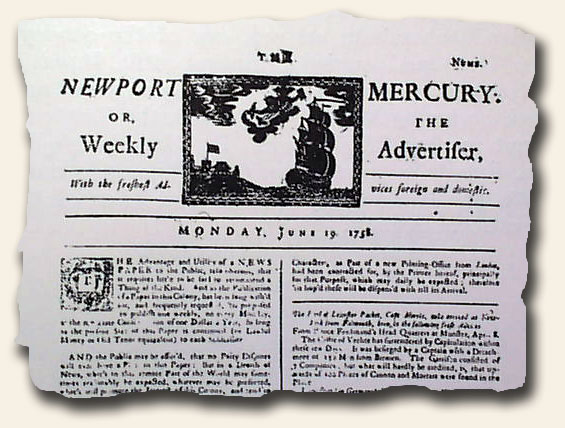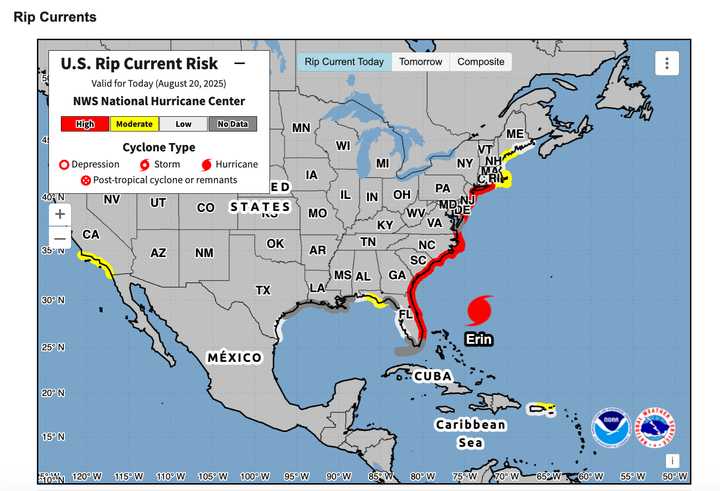Ann (Smith) Franklin became the first American woman editor when she took over as the Newport Mercury’s publisher and sole editor on August 22, 1762.
The Newport Mercury began publication in 1758 and was regarded as one of the nation’s oldest newspapers until recently.
After operating as an alternative weekly newspaper since 2005 and as a publication since 1758, the Newport Mercury announced in April 2018 that it would stop publishing weekly and instead become a monthly feature in the Newport Daily News. Since then, Gatehouse Media has completely ceased publishing The Newport Mercury without providing an explanation or statement.
In October 2017, New York-based Gatehouse Media acquired the Newport Mercury, Newport Daily News, Newport Life Magazine, and other magazines published by Edward A. Sherman Publishing.
Ann, Benjamin Franklin’s sister-in-law, was the first woman to publish an almanac, the first woman to be elected to the University of Rhode Island’s Journalism Hall of Fame, and the nation’s first female newspaper editor.
Her life as detailed in the Revised Edition of the Encyclopedia of American Literature, Volume 1;
Ann Smith Franklin, the daughter of Samuel and Anna Smith, was born in Boston and was one of the first female printers in the American colonies. She married English-trained printer James Franklin (1697–1735) in 1723. Five kids were born to the couple.
Before getting married, James Franklin had founded the New-England Courant, a newspaper and publishing company in Boston. He was also known for speaking out against the Puritans. Inspired by Richard Steele’s (1672 1729) and Joseph Addison’s (1672 1719) Spectator, the Courant aggressively targeted the Puritan hierarchy through one of its main leaders, a powerful priest named Cotton Mather. Franklin was detained, censured, and imprisoned for libel in 1722. The parliament forbade the publication of the Courant in 1723 without first reviewing its contents. By temporarily giving the paper to Benjamin Franklin, his apprentice and half-brother, James was able to dodge censorship and keep it open.
The two brothers had a falling out in 1723. Ann Franklin took over as assistant printer and shopkeeper after Benjamin departed the company and the city for Philadelphia. When the Franklins moved to Newport, a bustling port city in the comparatively liberal colony of Rhode Island, the Courant stopped publishing in 1726. They published the Rhode Island Almanack, also called Poor Robin’s Almanack (see almanacs), and set up the state’s first printing press. With James serving as editor and Ann as assistant printer, the Franklins launched a second publication, the Rhode Island Gazette, in 1732. The almanac, government printing contracts, and a bookstore kept the enterprise afloat even though it failed within eight months.
After a protracted illness, James passed away in 1735. After that, Ann Franklin took full ownership of the company, which thrived under her direction. A Brief Essay on the Number Seven, her first solo publication, was published in 1735. She was appointed the Rhode Island assembly’s official printer in 1736, a lucrative job she held until her passing. She kept publishing the almanac under the original alias of Poor Robin from 1736 to 1741. She began writing the majority of the almanac’s content herself in 1738.
Franklin was a prosperous businesswoman and printer who also took on the duties of a master craftswoman, teaching her two surviving daughters to be shopkeepers and typesetters. Her surviving son, James Jr., was sent to Philadelphia to work as an apprentice for his uncle, Benjamin Franklin, before rejoining his mother’s company in Newport in 1748. The first prosperous newspaper in Rhode Island, the Newport Mercury, was founded in 1758 by Franklin and her son. Ann, who was semiretired and unwell, authored some of the copy, while James Jr. was editor and publisher.
Franklin was once again compelled to take entire responsibility for the company after the deaths of her remaining children. Franklin became the fourth female publisher in colonial America when she continued to print the newspaper in collaboration with Samuel Hall. When she passed away in 1763, the company was formally disbanded.
The original publication date of this story was August 22, 2015. It’s been updated.
Sources: Blog.rarenewspapers.com photo credit
Howard M. Chapin, Printer, Newport, N.C., 1736–1763.Harvard University Press, Cambridge, Mass., 1924.
Margaret Lane Ford. Gender and Types: Ann Franklin, Colonial Printer, in Susan L. Albertine’s edited volume A Living of Words: American Women in Print Culture. University of Tennessee Press, Knoxville, 1995, 1 17.
Keeler, Edna Rushmore.Colonial women printers Elizabeth Timothy and Ann Franklin.Golden Hind Press, Madison, N.J., 1937.
Reference:
Carol Berkin, Susan Clair, and Imbarrato. Smith, Ann Franklin.American Literature Encyclopedia: New Republic Settlement, 1607-1815, vol. 1. Facts On File, Inc., New York, 2008.Online: American Women’s History. (accessed August 22, 2015) Facts On File, Inc. http://www.fofweb.com/activelink2.asp?ItemID=WE42&iPin=EAmL0130&SingleRecord=True.
More from What’sUpNewp
New Rogers High School celebrates grand opening with ribbon-cutting ceremony
Newport International Boat Show announces full slate of activities
Newport Mental Health offers free wellness event for students
Strong winds and waves batter Nantucket, Martha s Vineyard as Hurricane Erin moves out to the sea
There was a problem. Please try again or refresh the page.










